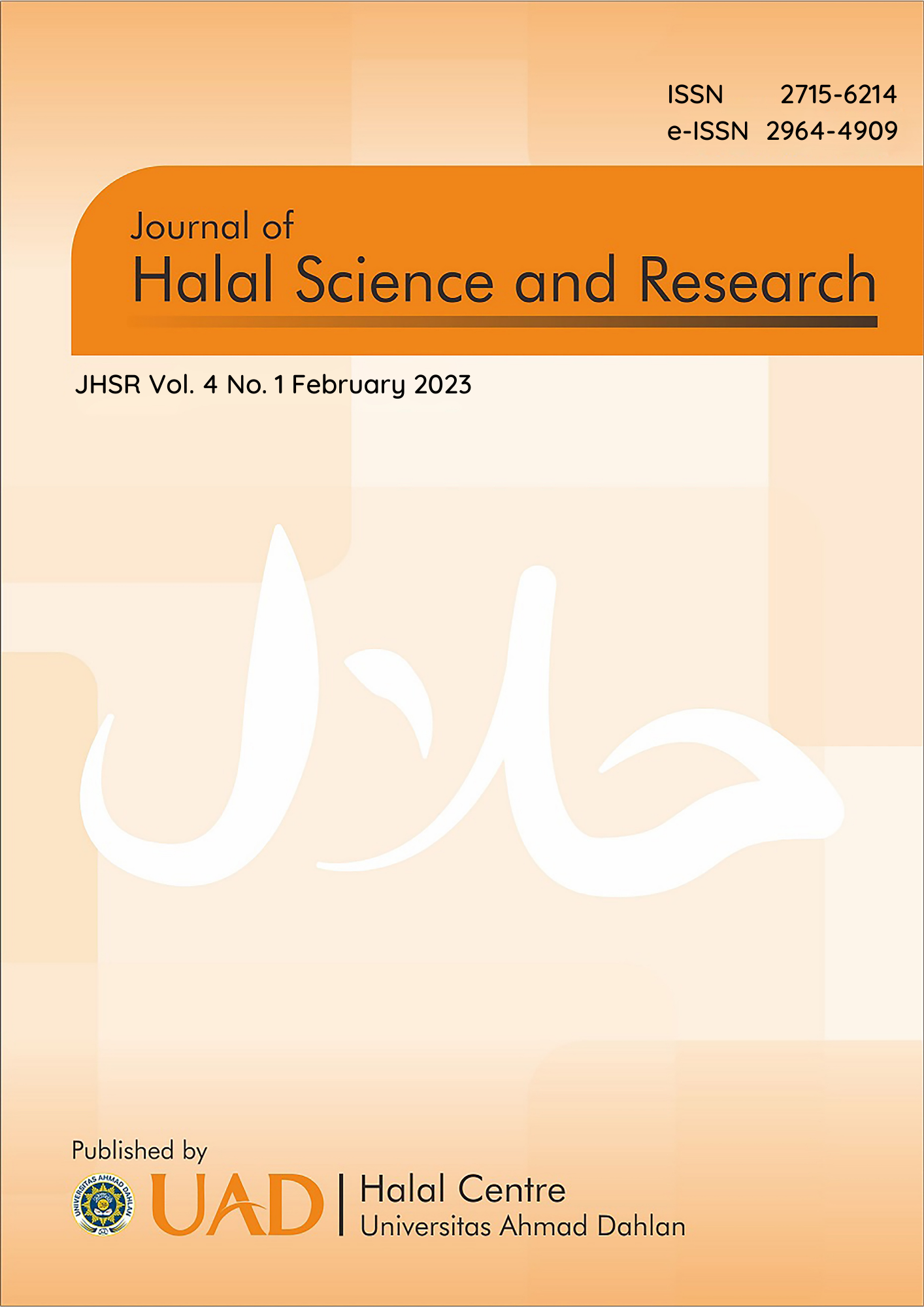Analysis of packaging defect on goat milk caramel candy in Etawa Agroprima
DOI:
https://doi.org/10.12928/jhsr.v4i1.7243Abstract
Goat's milk has the same benefits as cow's milk. Goat's milk contains many nutrients, especially complete protein from all kinds of essential amino acids. Etawa Agroprima is a company engaged in the processing and marketing dairy products. One of the products produced is goat's milk caramel candy. These candies are packaged using candy wrappers and diamond paper, which is covered with paper again, then put into PE plastic, sealed using a sealer, and put in a cardboard box. This packaging is intended to maintain the quality of the candy because the candy is easily runny if left open so that the caramel candy is not easily damaged. Writing this final project aims to determine the types of defects that occur in caramel candy products, the number of defective products for the entire product, and the causes of product defects—analysis of product types and defects using Pareto diagram analysis, while the cause using fishbone diagram analysis. Analysis of the data obtained on Etawa Agroprima using the two diagrams shows that the results of the Pareto diagram analysis show three types of defects, including torn packaging 75.56%, damaged packaging 13.33%, and no expiration label 11.11%. Then from the fishbone diagram analysis, it can be seen that the main factor causing defects in goat's milk caramel candy products is the packaging factor. Some root causes include manual production and packaging work, not using modern packaging equipment, contamination by physical contact, etc. Therefore, it is necessary to use automatic packaging tools.
Downloads
Published
Issue
Section
License
Copyright (c) 2023 Universitas Ahmad Dahlan

This work is licensed under a Creative Commons Attribution-NonCommercial-ShareAlike 4.0 International License.
Authors who publish with JHSR (Journal of Halal Science and Research) agree to the following terms:
1. Authors retain the copyright and grant Universitas Ahmad Dahlan right of first publication with the work simultaneously licensed under a Creative Commons Attribution-NonCommercial-ShareAlike 4.0 License (CC BY-NC-SA 4.0) that allows others to share (copy and redistribute the material in any medium or format) and adapt (remix, transform, and build upon the material) the work for any purpose, even commercially with an acknowledgement of the work's authorship and initial publication in Universitas Ahmad Dahlan.
2. Authors are able to enter into separate, additional contractual arrangements for the non-exclusive distribution of the journal's published version of the work (e.g., post it to an institutional repository or publish it in a book), with an acknowledgement of its initial publication in Universitas Ahmad Dahlan.
3. Authors are permitted and encouraged to post their work online (e.g., in institutional repositories or on their website) prior to and during the submission process, as it can lead to productive exchanges, as well as earlier and greater citation of published work (See The Effect of Open Access).

This work is licensed under a Creative Commons Attribution-NonCommercial-ShareAlike 4.0 International License.




